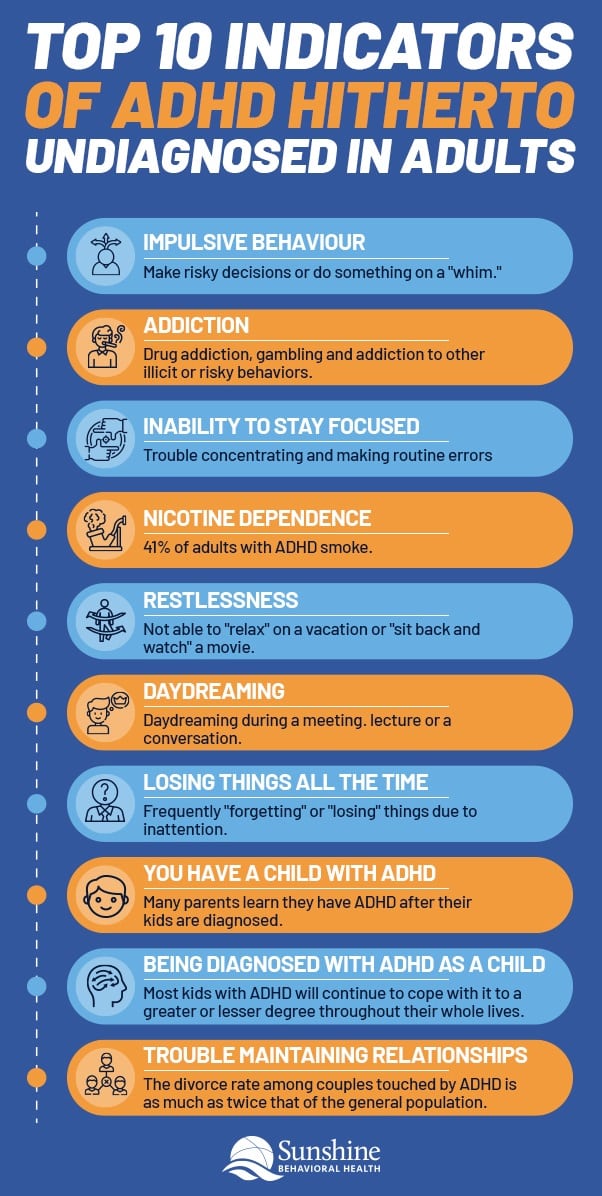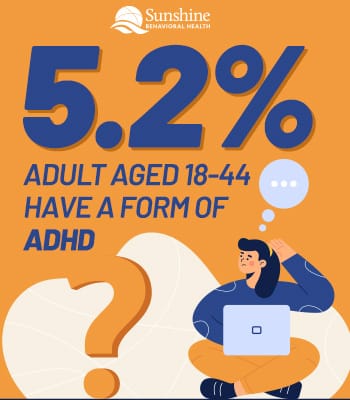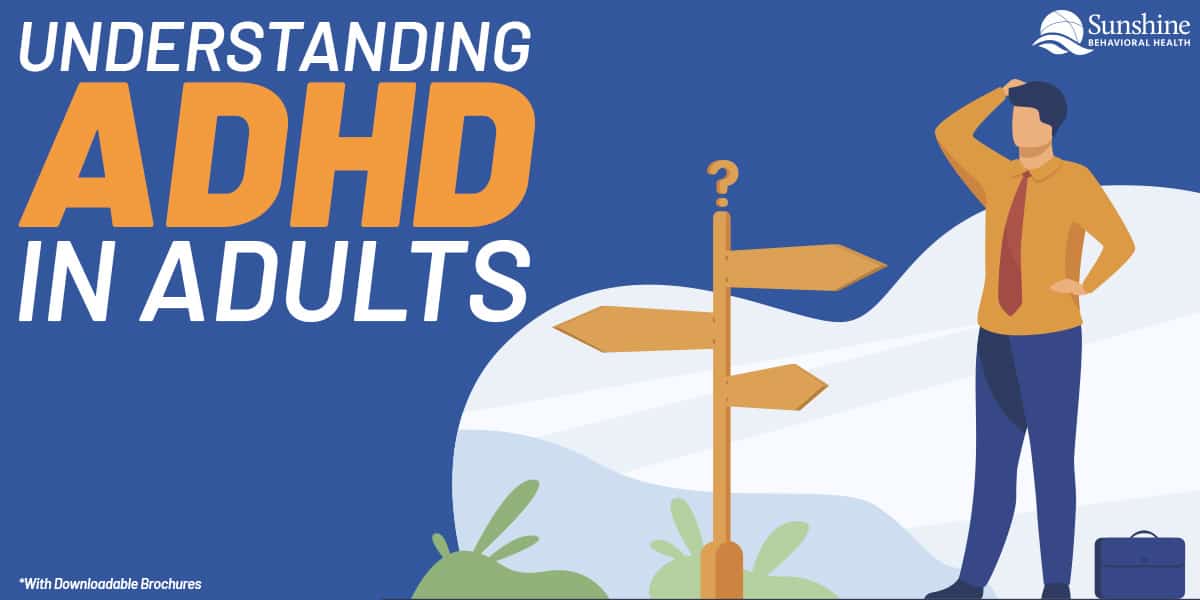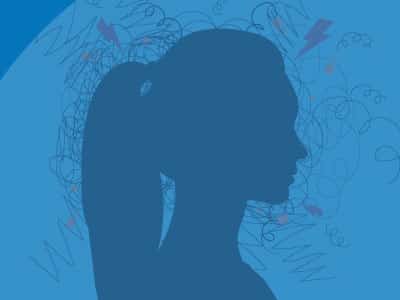What Is ADHD?
ADHD is one of the most common neurodevelopmental disorders, which are impairments to brain function that can affect speech and language, learning and memory, behavior, and motor skills.
Other neurodevelopmental disorders include autism, intellectual disabilities (mental retardation), cerebral palsy, and sometimes vision or hearing difficulties.
At its simplest, ADHD is an accumulation of observable symptoms. People with the disorder have difficulty
- Paying attention.
- Sitting still.
- Resisting impulsive behavior or actions.
According to some, ADHD is not a disorder. They say ADHD is not a lack of attention, just a lack of consistent, focused attention. When people with ADHD are interested, they may experience hyperfocus, the ability to intensely focus.
Some say people with ADHD have higher IQs or are more intelligent, but others say there is no correlation.
Because an ADHD diagnosis usually occurs in children, some people concluded it was simply kids being kids. Young people often have difficulty sitting still, paying attention, etc.
Misconceptions about ADHD
There is a lot of misinformation about ADHD. Myths about the condition include:
- ADHD is not a big deal. Everybody has a touch of ADHD.
- Some students fake ADHD because they think that ADHD drugs will improve their grades, make them study better, or make them smarter.
- ADHD does not affect females, and males always grow out of it.
- Lax or poor parenting in conjunction with too much electronic screen time can cause ADHD.
- What young people with ADHD need, some say, is more discipline, not drugs and therapy. Adults should take away or limit their time on smartphones, tablets, and laptops.
- ADHD drugs are overprescribed, addictive, unnecessary, and do not work. Physicians, psychologists, or pharmacists concocted ADHD to sell medications and other treatments.
None of those are true.
ADHD and Age
According to the National Survey of Children’s Health (NSCH), 5.4 million Americans, ages 2 to 17—8.4%—met a diagnosis of ADHD in 2016. Add those who ever had an ADHD diagnosis, and the number rises to 6.1 million or 9.4%.
The rate and number both increase through age 17:
Age 2 to 5:
- Current: 2.1% or 335,000
- Ever: 2.4% or 388,000
Age 6 to 11:
- Current: 8.9% or 2.2 million
- Ever: 9.6% or 2.4 million
Age 12 to 17:
- Current: 11.9% or 2.9 million
- Ever: 13.6% or 3.3 million

History of ADHD
ADHD is not new. ADHD dates back decades, centuries, maybe millennia.
As early as the fifth century BC (more than 2,400 years ago), Greek physician Hippocrates described a condition that sounds like ADHD. In 1693, philosopher John Locke wrote of students with symptoms of what might have been ADHD. In 1798, a Scottish physician provided a similar description. In 1902, modern science identified it as hyperkinetic impulse disorder.
All of these predate digital devices.
In 1980, the Diagnostic and Statistical Manual of Mental Disorders (DSM-III) included attention-deficit disorder (ADD). In 1987, the revised third edition (DSM-III-R) changed it to ADHD.
So, neither the idea nor the term ADHD is new.
Types and Symptoms of ADHD
The DSM-IV divided ADHD into three main types (though the DSM-V later changed them to what it called presentations):
Inattentive, but not hyperactive:
- Easily distracted
- Does not complete tasks or follow directions
- Does not answer questions or seem to be listening
- Makes careless mistakes as if not paying attention
- Forgets daily commitments
- Is disorganized
- Does not like sitting still or tasks that require sitting still
- Frequently loses objects
- Lacks focus
Hyperactive and impulsive but not inattentive:
- Often squirms or fidgets or engages in self-stimulating behaviors (stimming), which could include drumming their fingers on tables or tapping their feet
- Will not stay seated during social and civic events
- Cannot play quietly
- Cannot sit still
- Talks more in some situations than is socially acceptable and blurts out answers prematurely
- Finds it hard to wait and interrupts others
- Inattentive, hyperactive, and impulsive
To meet the diagnostic criteria for ADHD, the symptoms must:
- Not be explainable by another diagnosis.
- Occur in multiple settings, not just one (school, home, activities at other venues).
- Interfere with education, employment, or social activities.
- Appear before the age of 12.
Also, ADHD is ranked: mild, moderate, and severe. In general, the more severe the ADHD level, the earlier the symptoms appear.
Among children with current ADHD:
- Severe: 14.5%
- Moderate: 43.7%
- Mild: 41.8%
ADHD and Mental Health Resources
Organizations with ADHD resources include:
- American Academy for Child and Adolescent Psychiatry
- Attention Deficit Disorder Association
- American Psychological Association
- American Psychiatric Association
- CHADD (Children and Adults with Attention-Deficit/Hyperactivity Disorder)
- National Resource Center on ADHD
- National Institute of Mental Health (NAMI)
- HelpLine at 800a950aNAMI (6264)
- info@nami.org
- Centers for Disease Control and Prevention
ADHD in Adults
Many ADHD symptoms begin to occur between the ages of 3 and 6, and the average age of diagnosis is 7, but ADHD is not only a childhood disorder. Four percent of U.S. adults (18 or older) struggle with at least some symptoms of ADHD, as opposed to 5% of children.
In addition to problems consistent with young people with ADHD—disorganization, anxiety, problems managing time, being forgetful and impulsive—some symptoms or signs of adult ADHD include:
- Lack of focus or hyperfocus. It is not true that people with ADHD have no attention span. They have no attention span for things that don’t interest them. They can have an intense focus on a hobby or private interest, which can be good or bad
- Poor self-image, low self-esteem, and emotional problems
- Low motivation and restlessness, which can lead to procrastination, unexceptional work performance, and frequent job changes
- Frustration
- Boredom and tiredness
- Trouble concentrating well enough to read
- Mood swings and trouble controlling anger
- Health problems
- Troubled relationships, such as multiple divorces
- Addiction
- Poor vision or hearing
Statistics on adults are harder to find. Studies estimate that 50 to 60% of children with disorder continue to experience ADHD as adults.
Since symptoms of ADHD resemble other disorders, misdiagnosis is possible.
Causes of ADHD
ADHD is not just those observable symptoms or behaviors. It is at least partially physical or biological.
The Brain
The brains of people with ADHD have observable physical differences. Their overall brain volumes and the size of five regions of their brains tend to be smaller, which can cause delayed development. Their brain structures are also different enough that researchers have concluded that ADHD is a brain disorder.
Further evidence includes that the ADHD brain has lower amounts of norepinephrine, a neurotransmitter connected to dopamine. That can affect how the brain communicates between different regions.
We can see how the brains of individuals with ADHD differ with an MRI (magnetic resonance imaging) scan. That does not explain how or why the brains are that way.
A genetic predisposition seems among the most likely factors that contribute to ADHD. Studies have found that the condition runs in families. In 2019, an international research team identified areas on 11 human chromosomes that were risk factors for ADHD.
Environmental Factors
Another possible cause is environmental factors, a broad category that includes:
- Prenatal factors. If the mother smoked or drank during pregnancy, those could be a factor.
- Premature delivery. Low birth weight is associated with ADHD.
- Chemical exposure. Exposure to pesticides, lead, or other harmful compounds can cause brain damage and learning disabilities.
- Traumatic brain injury (TBI). Secondary ADHD can occur following concussions or other TBIs.
- Nutrition. Too much sugar may contribute to hyperactivity.
- Screen time. While not confirmed, limiting exposure to television and other electronic devices for the first few years of a child’s life is probably a good idea anyway.
Whether these are bona fide causes or just risk factors that may increase the likelihood of developing ADHD are disputed.
Dual Diagnosis
 While it does not seem that ADHD causes other mental health issues, 63.8% of people with ADHD also have one or more co-occurring disorders, including:
While it does not seem that ADHD causes other mental health issues, 63.8% of people with ADHD also have one or more co-occurring disorders, including:
- 51.5% behavioral or conduct disorders
- 32.7% anxiety problems
- 16.8% depression
- 13.7% autism spectrum disorder
- 1.2% Tourette syndrome
It may be that the conditions that predispose people for ADHD also predispose people for conditions such as:
Disruptive behavior disorders
- Oppositional defiant disorder (ODD): As many as 40% of people with ADHD have a pattern of being irritated with, angry, vindictive, or defying their parents or other authority figures.
- Conduct disorder (CD): Frequently antisocial and violent behavior, including stealing or destroying property and fighting or harming people or animals.
- Disruptive mood dysregulation disorder (DMDD). People with co-occurring DMDD are: between the ages of 6 and 18, angry pretty much all of the time, have out-of-proportion tantrums or outbursts at least three times a week, have difficulty functioning in more than one setting (school, home, other venues), and have had these problems for at least one year.
Mood disorders
Approximately 38% of adult ADHD clients also have a mood disorder, including:
- Depression. People with depression, major depressive disorder, or clinical depression display a lack of interest in most things and feel sad most of the time. Children with ADHD are 14 times more likely to feel depressed compared to other children.
- Mania. Abnormally elevated mood and energy.
- Bipolar disorder. As many as one in five individuals with ADHD suffer from this: periods of depression alternating with mania. Bipolar disorder is sometimes known as manic depression.
- Anxiety. Though not usually considered a mood disorder, anxiety disorders (such as obsessive-compulsive disorder or OCD) affect almost a third of children with ADHD and more than half of adults with ADHD.
Other disorders
- Autism spectrum disorder (ASD). ASD is a neurodevelopmental disorder with many similarities to ADHD (intense focus, underdeveloped social skills). In more severe cases, language and intelligence impairment make day-to-day life and social interactions impossible.
- Tourette syndrome. Another neurodevelopmental disorder. Tourette causes involuntary tics such as unwanted motions, facial expressions, and sometimes offensive language. Most people with Tourette syndrome have ADHD, but fewer than one in 10 people with ADHD have Tourette.
- Learning disabilities. As many as half of children with ADHD also have a learning disorder—such as dyslexia (a reading learning disorder) and dyscalculia (a mathematics learning disorder)—about 10 times the rate of children without ADHD.
- Sleep disorders. One-quarter to one-half of parents of children with ADHD report that their children have difficulty sleeping, both falling and staying asleep.
- Substance use disorders. Adults with ADHD were almost three times as likely to also have a substance use disorder as adults without ADHD (15.2% vs. 5.6%). Their most abused substances are alcohol and marijuana. But people—teens and adults—who are diagnosed with ADHD and find treatment are less likely to abuse substances than those who are undiagnosed and untreated.
What Treatments Are There for ADHD?
The two most common treatments for ADHD are medication and behavioral therapy. Of children with current ADHD:
- 30.3% received medication alone
- 14.9% behavioral treatment alone
- 31.7% received both types of treatment
- 23.0% received neither treatment
Medication
Although stimulants can make you jittery and hyper, physicians prescribe them for ADHD because they help 70%-80% of cases. Still, some think the cure is worse than the disease.
The reason is that, as with autism, much ADHD behavior is stimming, or self-stimulating behavior. By constantly stimulating themselves, they reduce or control their ADHD symptoms.
By taking a low dose of an ADHD stimulant, people boost the supply of neurotransmitters in the prefrontal cortex, such as dopamine and norepinephrine, and don’t need to self-stimulate.
Of American children with currently diagnosed ADHD, ages 2 to 17, about 62% (3.3 million) took medication for their ADHD.
Some parents and others think that prescribing ADHD medications will increase the risk of their children becoming addicted to illegal drugs. These medications are central nervous system (CNS) stimulants with similar effects to cocaine when taken in larger-than-prescribed doses.
But studies find that children with ADHD who have used these prescribed medications are less likely to become addicted to any drugs compared to children with ADHD who haven’t used such prescriptions and non-ADHD youth who use ADHD medications as study aids.
People with substance use disorders (SUDs) take drugs for the rush. People with ADHD take prescription stimulants to return them to “normal.”
Also, ADHD drugs don’t take effect for an hour or so. Cocaine takes less than a minute. People with SUDs don’t want to wait.
The most commonly prescribed stimulant drugs for ADHD are:
- Amphetamines: Adderall XR, Dexedrine, Evekeo
- Methylphenidate: Ritalin, Concerta, Quillivant XR
- Others: Focalin XR (dexmethylphenidate hydrochloride), Vyvanse (lisdexamfetamine dimesylate)
For the other 20% to 30% of people with ADHD for whom stimulants don’t work, there are nonstimulant drugs. They are not as effective, may not be approved by the U.S. Food and Drug Administration for ADHD, and may have side effects. They include:
- FDA-approved medications: Strattera (atomoxetine)
- Antidepressants: Wellbutrin (bupropion), Effexor XR (venlafaxine)
- Tricyclic antidepressants: Tofranil (imipramine), Norpramin and Pertofrane (both despiramine), Aventyl and Pamelor (both nortriptyline)
- MAOIs (monoamine oxidase inhibitors): Nardil (phenelzine), Parnate (tranylcypromine)
- Blood pressure medications: Intuniv (guanfacine), Kapvay and Catapres (both clonidine)
- Sleep disorder medications: Provigil (modafinil)
- Antiviral medications: Symmetrel (amantadine)
Behavioral therapies
- Psychotherapies. One, cognitive behavioral therapy (CBT), attempts to change negative ways of thinking and teach better coping mechanisms.
- Social skills training. Therapist-led instruction, modeling, role-playing, and feedback.
- Contingency management. Good behavior is reinforced and rewarded with small prizes or tokens.
- Family therapy. The parents, siblings, and other relatives learn how to mold and cope with a child with ADHD.
Medical devices
In 2019, the U.S. Food and Drug Administration authorized a prescription ADHD medical device, the Monarch External Trigeminal Nerve Stimulation (eTNS) System. The size of a cell phone, the device delivers a low-level electrical tingle to a part of the brain associated with ADHD.
Support groups
Support groups may help adults with ADHD. Regardless of the condition, it often helps to talk with people who are going through the same challenges and triumphs as you.
A few organizations that offer or provide connections to ADHD support groups are:
- Children and Adults with Attention-Deficit/Hyperactivity Disorder (CHADD) – Affiliate and support group locator
- Attention Deficit Disorder Association (ADDA) – Support groups for adults with ADHD
Lifestyle changes
ADHD has no cure, though many children with the disorder do seem to grow out of at least some severe symptoms. They may have to live with other symptoms.
Some symptoms subside when a child gets enough sleep and eats a healthy, balanced diet.
ADHD is not a monolith. The same remedy will not help all people, but don’t give up. There are too many alternative therapies to list here. Keep trying until something helps.
Sources
Medical disclaimer:
Sunshine Behavioral Health strives to help people who are facing substance abuse, addiction, mental health disorders, or a combination of these conditions. It does this by providing compassionate care and evidence-based content that addresses health, treatment, and recovery.
Licensed medical professionals review material we publish on our site. The material is not a substitute for qualified medical diagnoses, treatment, or advice. It should not be used to replace the suggestions of your personal physician or other health care professionals.







